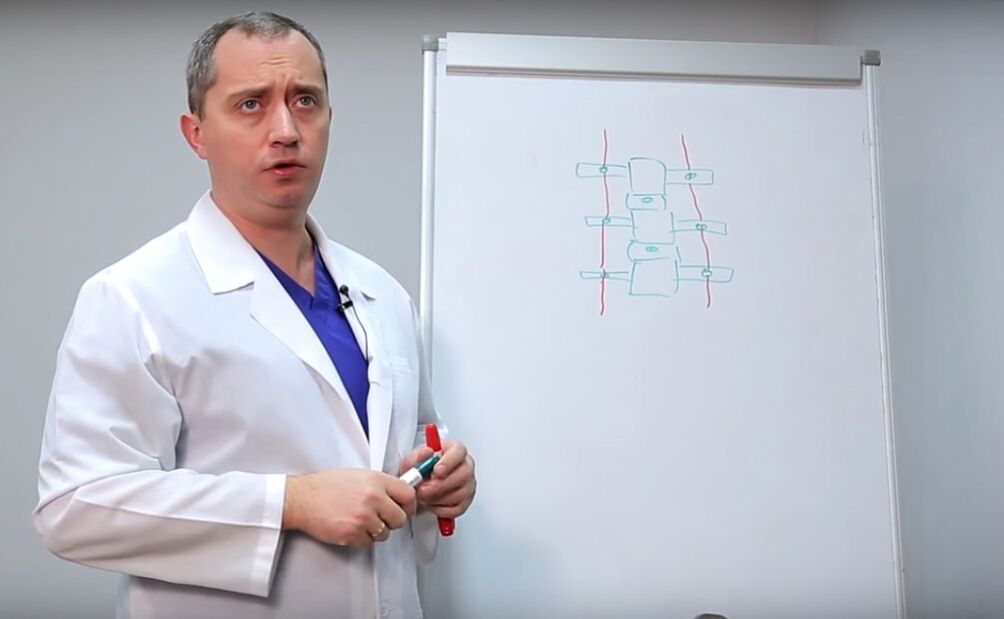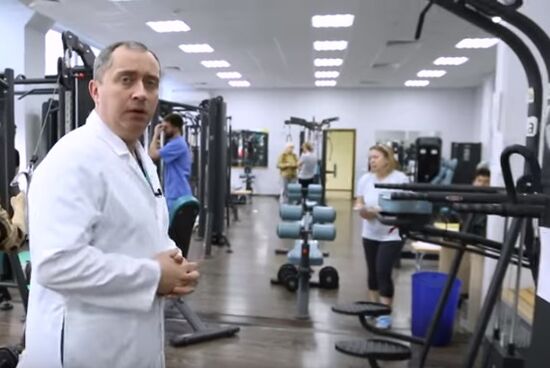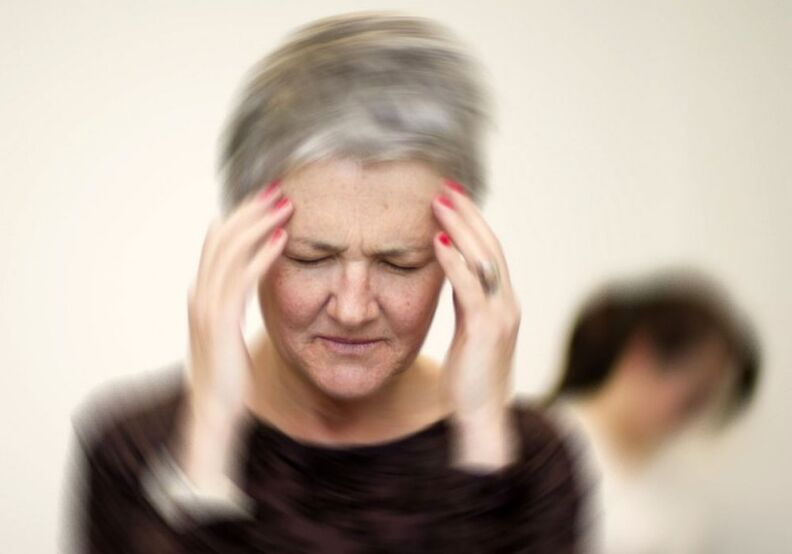Cervical spine osteochondrosis is a pathology, characterized by the development of destructive depth processes in joint cartilage tissues.These phenomena develop due to the physiological weakening of the nutrition of intervertebral discs, which leads to the fact that the cartilage tissue regenerates evil (restored) even after minor microtrauma of the spine.
Most patients, especially carrying the inactive lifestyle, constantly carries the muscle corset of the neck, as they are forced to remain in the same pose for a long time.All of these factors contribute to the development of the disease.
Attention.Cervical osteochondrosis is one of the most dangerous diseases for health and even human life.This is due to the fact that a large number of vital vessels are concentrated in the neck.
A little anatomy
In the structure of all vertebrae of the lumbar, thoracic and cervical parts, there are transversal processes.
In the thoracic region, ribs are linked to transverse processes.Lumbar segment vertebrae bodies are the largest, as this department has a significant mass.The deep muscles of the lower back are linked to the transverse processes of the lumbar vertebrae.Among the vertebrae are elastic cartilage (discs).

Structure characteristics
The cervical spine is characterized by some anatomical characteristics.Experts focus on public attention that only in the cross-sectional processes of 1-6 cervical vertebrae are holes by which the vases that feed the basal section of the brain (brain trunk) pass.
The basal department of the brain can be considered as a "computer center" in which data is collected and analyzed throughout the body.The organ presented controls all automatic processes in the body (movement, breathing, temperature, coordination, heartbeat, sweating etc.).
Doctor's advice.If you have diagnosed cervical osteochondrosis and the assistant doctor tells you that this is absurd and this pathology can be cured with ointments and some lotions, it is better to work as much as possible.
Pathogenesis of osteochondrosis
With cervical osteochondrosis, the vertebrae of the vertebrae are observed in relation to each other, which leads to compression of the arteries.The compression of these vessels can cause an ischemic blow of the brain.Such phenomena are entirely fixed.
If a person has a small cervical osteochondrosis, but no one has treated or treated it incorrectly, with minimal mechanical effects, the displacement of the vertebrae is observed, blood circulation is disturbed, patients usually complain of dizziness and nausea.After a while, the patient loses consciousness.This is usually found in people who have been injured in an accident.

Clinical signs of the disease
With the development of cervical osteochondrosis, the following symptoms are observed:
- Increased perspiration;
- Weakening of the muscular neck frame;
- Handle dormancy;
- increased fatigue;
- loss of consciousness;
- hypertension;
- nausea and dizziness;
- Posture problems;
- insomnia;
- limited movements;
- reasonable bad mood;
- chest pain;
- a feeling of running goose bumps;
- When turning the head, a crisis is heard;
- Pain in bones and chills;
- clear shoulder and neck pain;
- Violation of coordination;
- Problems with vision and hearing.
Advice!By identifying the resources above, you need to contact an experienced specialist - therapist, neuropathologist, vertebrologist, traumatologist, cardiologist or surgeon.After a complete diagnosis, the doctor can diagnose and choose the ideal treatment tactics.

Complications
Degenerative-distribution processes in spine tissues violate the functional activity of this organ.Simply put, there is a "wear" of the spine:
- Limited mobility of the spine spine;
- decreased height of intervertebral discs;
- the formation of a hypothalamic syndrome;
- respiratory arrest due to damage to the spinal cord;
- violation of blood flow in the spinal cord;
- violation of swallowing reflex;
- Dysfunction of internal organs;
- nerve compression;
- Disc loss;
- Breathing violation;
- Vertebral spine deformation;
- vestibular disorders;
- Neurocirculatory dystonia;
- Shoulder -Discussion periartrosis;
- thyroid dysfunction;
- Epicondalital;
- intervertebral channel stenosis;
- The formation of intervertebral protrusions and hernias.

Observation!All of these complications require immediate help, they relate to dangerous conditions that worsen not only the patient's quality of life, but can also cause their death.
The doctor also notes that with osteochondrosis, sometimes a stroke is observed.In this case, the brain is affected and, in fact, all the regulation of body work is disturbed.In the holes of the transverse processes of the vertebrae, not only the vessels, but also the nerves pass.When the vertebrae are displaced, they are also compressed.For this reason, muscle weakness of the hands is observed, complete or partial of its paralysis.
Often, patients resort to traumatologists because they have a shoulder, take pictures, go through a physical therapy course (massage, electrotherapy, etc.), and pain syndrome is not eliminated.
Upon contact with a specialized clinic, the institution's experts first perform a comprehensive examination and only then, based on the results, is the appropriate treatment prescribed.With a slight tightness of blood vessels, blood flow in the brain is disturbed, which causes the development of hypertension.In 95% of cases, hypertension develops due to compression of blood vessels with osteochondrosis.

Doctors have developed special exercises for the decompression of blood vessels and nerves, the restoration of the functions of the neck muscle-ligament apparatus.
If the patient is diagnosed with cervical osteochondrosis, at least three tests are recommended:
- Radiography.With your help, information about the condition of the cervical spine segment is obtained.The images must be performed in 2 projections and airplanes.In addition, this method allows to establish the mobility of damaged vertebrae, the displacement of their bodies, the presence of salt deposits and the appearance of neoplasms.
- Doplarophy, or dopplerometry.It allows to evaluate the forgness of the blood vessels using a blood flow schedule.During the procedure, the patient is installed special sensors in places of the alleged location of sponsorship.
- Magnetic resonance imaging of the cervical spine.This is perhaps the most informative, painless and accurate diagnostic method.Using this method, not only the presence of the disease is revealed, but also the degree of its severity.
Conclusion
Osteochondrosis is a very insidious and dangerous disease.It is extremely difficult to diagnose this pathology in the early stages of pathogenesis, as it goes almost asymptomatic.With the progression of the disease, many signs are confused, as problems with blood flow can cause suspicions of disturbance in the field of heart.Therefore, doctors recommend, with the slightest manifestations of cervical spine pain, immediately contact contact specialists.This will allow you to get rid of problems in the early stages and prevent the development of various types of complications.













































